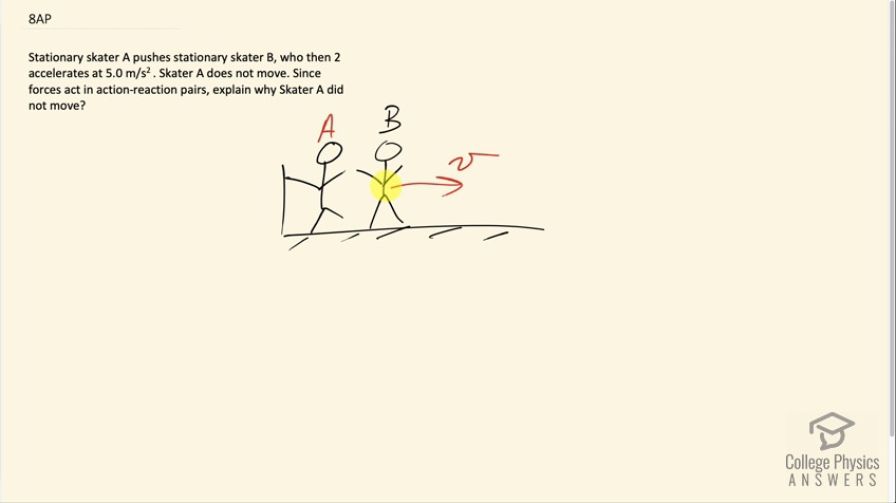Question
Stationary skater A pushes stationary skater B, who then 2 accelerates at . Skater A does not move. Since forces act in action-reaction pairs, explain why Skater A did not move?
Final Answer
Please see the solution video.
Solution video
OpenStax College Physics for AP® Courses, Chapter 4, Problem 8 (Test Prep for AP® Courses)

vote with a rating of
votes with an average rating of
.
Video Transcript
This is College Physics Answers with Shaun Dychko. This is a skater A here and skater B here. Skater A pushes on skater B and skater B moves, but skater A does not. How is this possible? Well, Newton's third law is never violated. There's a force on skater B due to skater A. Then there's a Newton's third law counterpart on skater A to the B. To find the Newton's third law counterpart, you always just switch around the sub scripts here. The first one being the thing that is experiencing the force and the second thing being what applies the force. This is a force on skater B due to skater A, and the Newton's third law counterpart is then the force on skater A due to skater B. Now, skater A doesn't move because they must have something else that they're in turn pushing against, which is pushing back on them. Perhaps they're at the side of the skating rink, and they're applying a force on the wall to the skater A, and then that would have caused the skater A to experience a Newton's third law counterpart, which is this way, the force on A due to the wall. If these two forces are the same, this one and this one, skater A will experience no acceleration. The alternative is that they might be digging their escape late into the ice to achieve the same effect and so there'd be an arrow here, force on the ice due to the skater A and then it'd be a counterpart in third law counterpart pointing this way to escape the force on the A due to the ice.